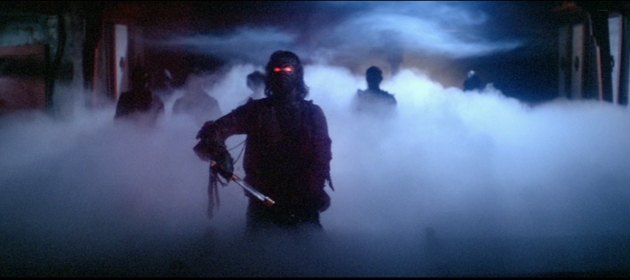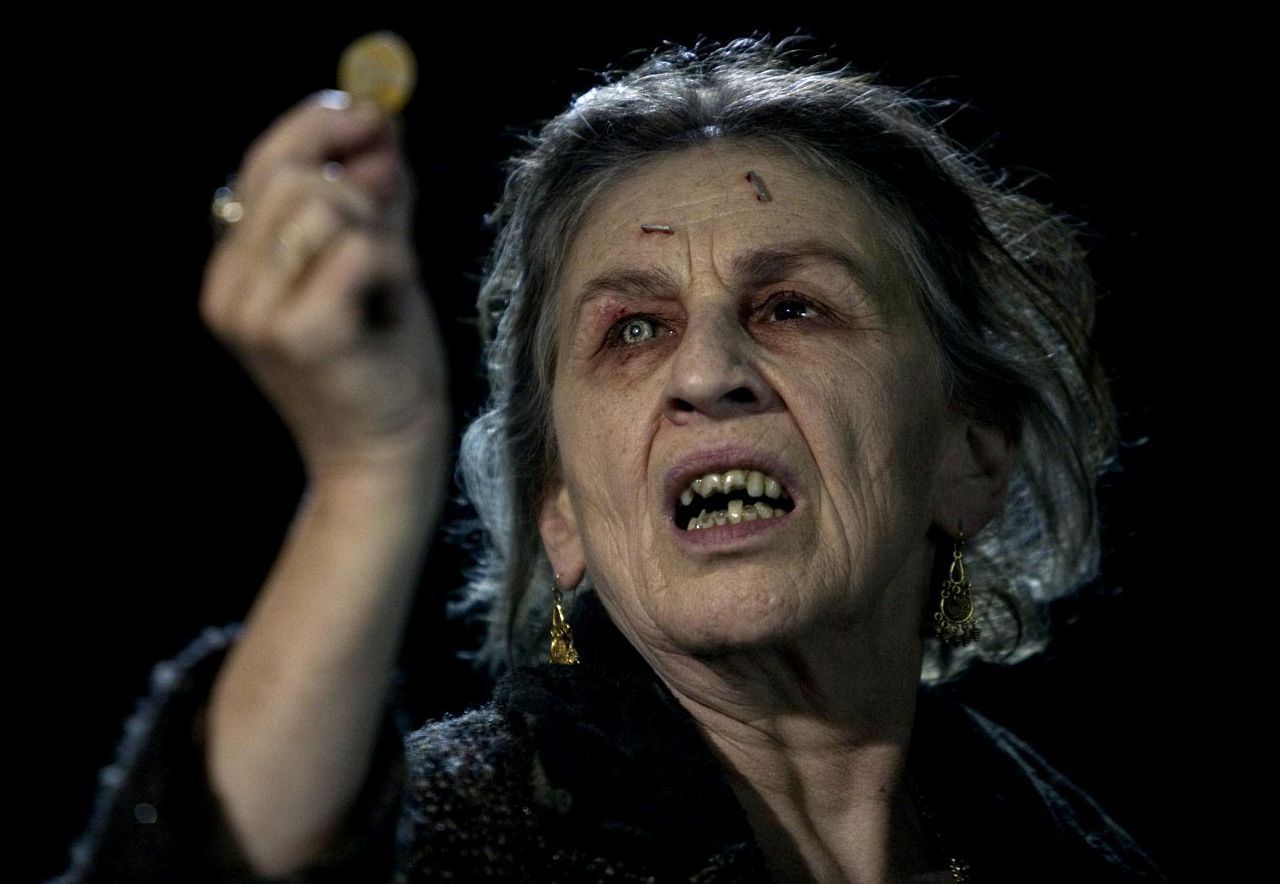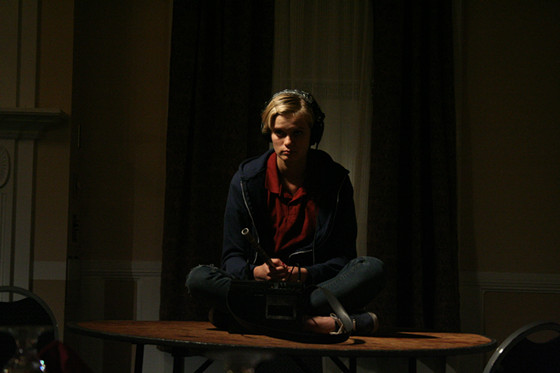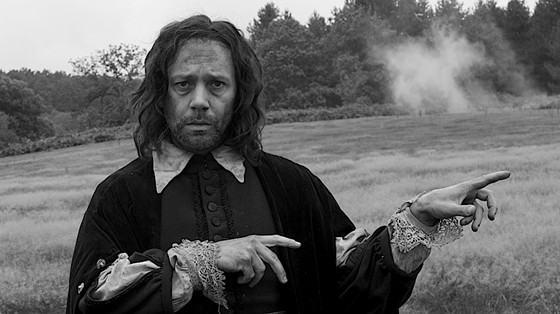6. The Fog (1980, John Carpenter)

As the California town of Antonio Bay approaches the 100th anniversary of its founding, a series of strange supernatural events begin to occur. All of these are accompanied by the appearance of an unearthly fog and are seemingly related to the dark secrets found within a diary by the town’s priest.
Although not directly referenced by John Carpenter when listing his inspirations for the film, the influence of M. R. James can be seen throughout The Fog. Its seaside setting evokes James’s stories ‘Whistle and I’ll Come to You Lad’ and ‘A Warning to the Curious’ while its use of an old diary as a plot device is about as Jamesian as you can get.
The film’s slow build up also conforms to James’s preferences with the supernatural element being gradually introduced until it takes centre stage.
7. Drag Me to Hell (2009, Sam Raimi)

Bank loan officer Christine Brown wants to be promoted to assistant manager over her colleague. To do this, however, she must prove to her boss she can make tough decisions. When an elderly gypsy woman comes to her asking for an extension on her mortgage payment, Christine sees the opportunity to prove herself.
She denies the woman an extension but, after a dramatic scene in which the distraught and humiliated woman is thrown out of the bank by security, finds herself the victim of a curse. She soon discovers that if she fails to lift this curse within three days she will be dragged into hell by demons and condemned to remain there for eternity.
After directing three Spider-Man films, Drag Me to Hell marked Sam Raimi’s return to the horror genre that had made him famous. In contrast to The Evil Dead, though, Drag Me to Hell is far more restrained and relatively lacking in gore.
Also, whereas The Evil Dead drew upon the works of H. P. Lovecraft, in Drag Me to Hell it seems to be M. R. James who is the main cultural influence. Like Night of the Demon, Drag Me to Hell takes elements from James’s story ‘Casting the Runes.’ The motif of a cursed object that can be passed from person to person, thus inflicting that person with the curse, and the idea that the person has only a short amount of time to lift the curse once they are afflicted are taken straight from James’s story.
Sam Raimi’s commitment to building an atmosphere of dread over using shock tactics (though the film is not wholly devoid of these) also places Drag Me to Hell in firmly Jamesian territory.
8. The Innkeepers (2011, Ti West)

The Yankee Pedlar Inn is about to close and is in its final weekend of operation. The only two employees working at this time are college dropout Claire and paranormal enthusiast Luke.
The inn is reputedly haunted by the ghost of Madeline O’Malley, a bride who hung herself after her husband abandoned her during their honeymoon. As it’s their last weekend at the hotel, Luke and Claire decide to document any evidence of Madeline’s apparition. When supernatural events do begin to occur, though, the pair find themselves drawn way beyond their comfort zones.
Ti West’s fourth feature film The Innkeepers is, to date, his most Jamesian. Aside from the obvious – it’s a ghost story – the film has many stylistic similarities to James’s work. Its hotel setting – a hotel with a dark and chequered history – evokes James’s stories ‘Number 13’ and ‘Rats,’ which also take place in old inns. The gradual emergence of the supernatural in a relatively innocuous setting populated by naïve characters is also a trope that occurs repeatedly throughout James’s oeuvre.
9. A Field in England (2013, Ben Wheatley)

In the middle of an English Civil War battle, alchemist’s assistant Whithead uses the chaos as an opportunity to flee. He soon meets some other deserters and together they set off to find an ale house. Shortly afterwards, however, they are accosted by an Irishman named O’Neill who, like Whitehead, is an alchemist.
Using the force of his personality, and with the help of some magic mushrooms, O’Neill takes control of the group and enlists the men to help him find some treasure, which he believes to be buried in a field nearby.
In its portrayal of the British countryside as a place full of hidden mystery and danger, A Field in England evokes the ‘folk horror’ not just of early 70’s cinema but also of the stories of M. R. James. ‘A View from a Hill,’ which follows a man whose binoculars present him with dark images from the past, is one such story.
The film’s period setting and references to witchcraft and alchemy also bring to mind stories like ‘The Ash-tree’ as well as innumerable others by James in which occult practices play a significant part.
While the film’s hallucinogenic imagery and difficult to follow narrative would probably not be to James’s tastes, were he alive today, his fingerprints are still visible in A Field in England and in the other films of its director Ben Wheatley.
10. The Babadook (2014, Jennifer Kent)

Jennifer Kent’s directorial debut follows widowed single mother Amelia as she attempts to deal with the increasingly erratic behaviour of her son Sam. The boy’s aggression and strange beliefs only worsen when a pop-up storybook called Mister Babadook appears in the house.
At first, it seems as if Sam’s issues may just be down to behavioural problems, but when Amelia herself begins to witness things that can’t be easily explained she begins to wonder whether the Babadook may be more than just a character in a book.
The Babadook carries a number of Jamesian tropes. Again, as with other films in this list, it is the discovery of a mysterious book that precipitates the appearance of a malevolent entity. The presence of this entity is at first only implied but as the film progresses it becomes impossible to ignore.
This focus on atmosphere over cheap scares reflects James’s own approach which he summed up in the introduction to the anthology ‘Ghosts and Marvels: A Selection of Uncanny Tales’: ‘Let us, then, be introduced to the actors in a placid way; let us see them going about their ordinary business, undisturbed by forebodings, pleased with their surroundings; and into this calm environment let the ominous thing put out its head, unobtrusively at first, and then more insistently, until it holds the stage.’
As well as being a good example of a modern Jamesian horror film, The Babadook’s superb script, fascinating, though disturbing, psychological undercurrents, and great performances, from Essie James and Noah Wiseman, make it supremely watchable.
Author Bio: Joshua is a Film Studies graduate residing in Cambridge, England. He dabbles in screenwriting and regularly writes review of recent releases for his blog: http://thatsyouropinionman.blogspot.co.uk/.